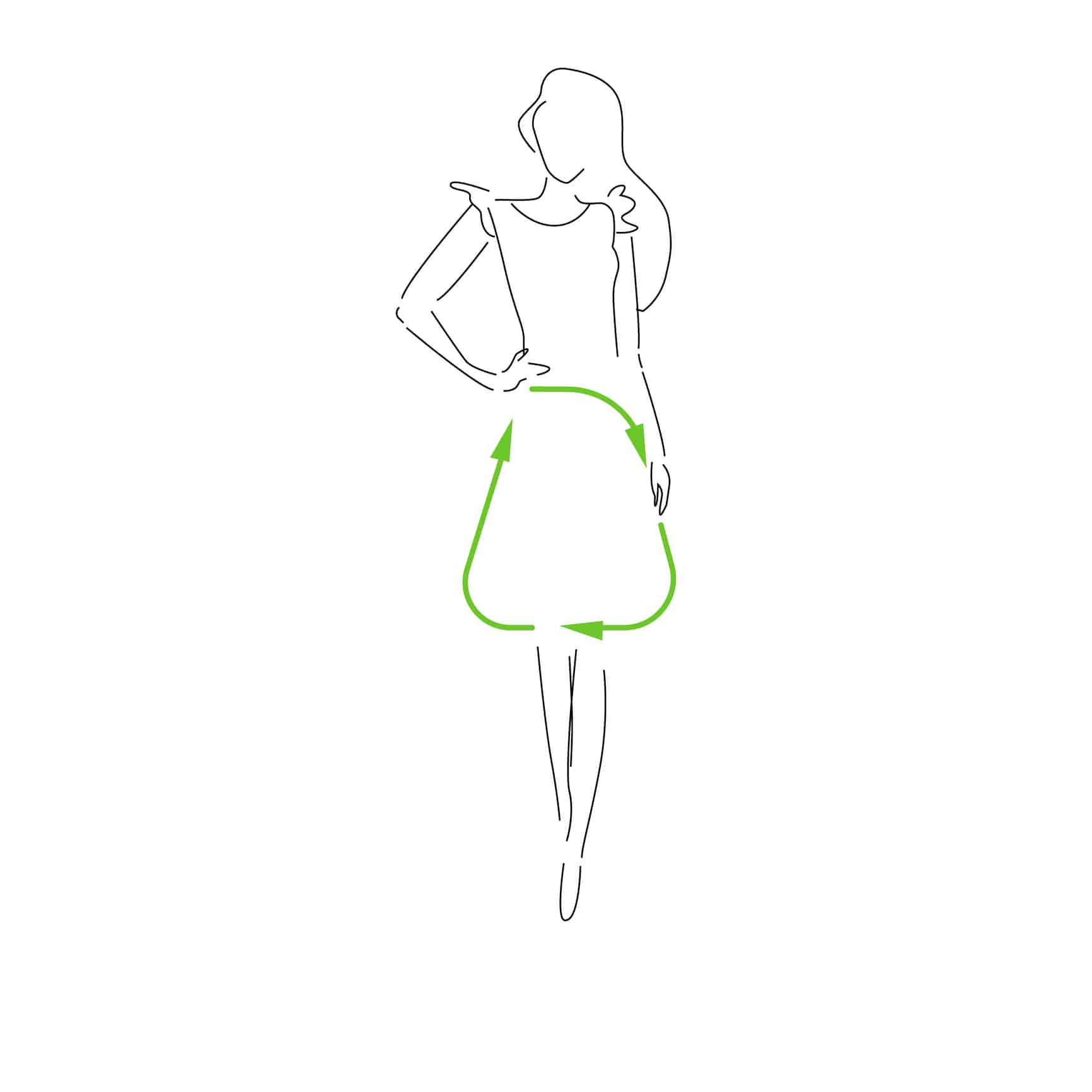A garment technologist provides technical support through every stage of garment production, from design to manufacturing. They must possess an extensive understanding of production processes and fabrics, all while managing costs and meeting tight deadlines. Garment technologists work closely with designers, buyers, and pattern cutters.
If you are keen on pursuing a career in fashion while elaborating on your passion for technology, being a garment technologist might be the best fashion job for you. Read on to hear everything about this job role, and whether you’d be a good fit.
A garment technologist is involved in all stages of garment development and is primarily responsible for the correct fit and performance of a garment. They work closely with designers, buyers, and merchandisers, advising on the best fabrics, analysing returns, and ensuring items can be made to meet the budget. A garment technologist usually liaises directly with factories throughout the world to communicate needs and feedback.
Here are the skills and duties required as a professional garment technologist:
As a garment technologist, you will need to have:
Since carrying out fabric research is part of their job description, we’d like to give you a better idea of what exactly that entails.
Fabric research involves identifying the latest fabric trends, ensuring quality in areas such as strength and durability, and sourcing fabrics and accessories.
Garment technologists need to allocate fabrics that align with what the brand wants, while remaining within budget and remaining safe for its users. They can source fabric online, at trade shows, or from a mill.
A garment technologist can work in a large team, small team, or alone. They can be employed by a high street retailer or a business manufacturing any type of clothing, including lingerie, pet clothes, menswear, and baby clothes. Garment technologists are typically office based. They have access to production sites and are often required to travel in and outside of the country to visit factories.
Like with most job roles, pay rates vary depending on age, experience, location, and company size.
Starting salaries are usually between £16,000 and £20,000 per year. With experience, garment technologists can increase their yearly earnings to between £25,000 and £35,000. Senior garment technologists can expect an average salary of £45,000 to £50,000 or more.
Being a garment technologist isn’t the most high-paying job, but for people with a true passion for style and fashion, working your way up to a better salary shouldn’t be difficult.

Do you like what you hear so far regarding this job role? Here are some tips for landing a role as a garment technologist.
#1: Start as a Pattern Cutter
Starting as a pattern cutter may not sound like the most glamorous job in the world, but it’s a great way to gain the experience you need to become a professional garment technologist. Since most suppliers have machines, you’ll gain a solid foundation of understanding with regards to construction. It’s an excellent first-hand experience to see and learn how garments are made.
You can then apply the skills you learned as a pattern cutter to your role as a garment technologist. Not only is it beneficial – it’s necessary to possess these skills if you want to succeed as a garment technologist.
#2: Get a Degree
While it’s not essential, most employers look for applications with a degree in a clothing or fashion technology subject. Getting a degree will hone your understanding of fabrics and the industry as a whole. Plus, it’ll make your CV sparkle.
Fortunately, degrees and HNDs in clothing and garment technology related subjects are widely available.
If getting a degree is not possible, attend seminars, conferences, and short courses – anything that can expand on your knowledge and shows employers you know what you’re talking about.
#3: Build Connections
Meet as many people as you can in the industry, both online and offline. Show initiative, be friendly, and don’t be afraid to ask questions. The more connections you have, the more opportunities will pop up. Plus, it’s always good to have one or two mentors in the industry to show you around and share some insider secrets.
When you network with people and demonstrate your worth, you never know what opportunities might come your way. So stay friendly, professional, and (ever so slightly) curious.
#4: Consider Working at a Startup
While global companies are happy to invest in young talent, most of the starting roles are either internships and unpaid, or severely underpaid. There’s also not much flexibility in your role as a garment technologist at a big company, because they like things done a certain way – their way.
If you’d like to advance quicker and be able to implement ideas, try applying for a position at a smaller company or startup. They’ll be open to your suggestions and more likely willing to let you implement them.
#5: Stay Motivated
To make it as a garment technologist you need to be driven and motivated. You also need to be willing to start at the bottom and work your way up, because it’s not always possible to get a high-paying role in the first couple of years as a garment technologist. Be willing to learn and always try to see the bigger picture. This will help you achieve your goals.
Even if you start as a part-time pattern cutter at a small supplier, look at it as a way to grow your skills, make connections, and prove yourself for other positions.
The UK’s textile manufacturing base is continually growing and investing, which means pursuing a career in garment technology is a pretty safe and wise decision. According to research, sector employment continues to grow steadily from 97,000 in 2011 to over 130,000 in 2021.
If you’d like to become a garment technologist, make sure you get some experience behind you, earn a degree (or at least an education in fashion technology), and get your foot in the door. Very soon, you’ll be calling yourself a successful garment technologist.
| Cookie | Duration | Description |
|---|---|---|
| cookielawinfo-checbox-analytics | 11 months | This cookie is set by GDPR Cookie Consent plugin. The cookie is used to store the user consent for the cookies in the category "Analytics". |
| cookielawinfo-checbox-functional | 11 months | The cookie is set by GDPR cookie consent to record the user consent for the cookies in the category "Functional". |
| cookielawinfo-checbox-others | 11 months | This cookie is set by GDPR Cookie Consent plugin. The cookie is used to store the user consent for the cookies in the category "Other. |
| cookielawinfo-checkbox-necessary | 11 months | This cookie is set by GDPR Cookie Consent plugin. The cookies is used to store the user consent for the cookies in the category "Necessary". |
| cookielawinfo-checkbox-performance | 11 months | This cookie is set by GDPR Cookie Consent plugin. The cookie is used to store the user consent for the cookies in the category "Performance". |
| viewed_cookie_policy | 11 months | The cookie is set by the GDPR Cookie Consent plugin and is used to store whether or not user has consented to the use of cookies. It does not store any personal data. |
Create your free account and begin your sustainability journey.

